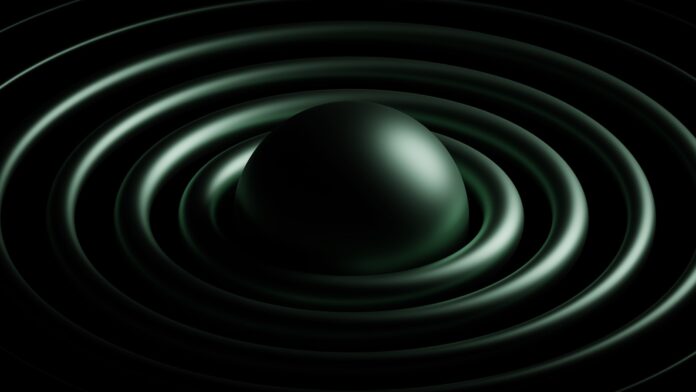Key Takeaways:
- Gravitational waves let scientists study events invisible to telescopes.
- Researchers found 128 new cosmic collisions since May 2023.
- A neutron star and black hole collision offers rare insights.
- Improved detectors confirmed Einstein’s predictions with unmatched clarity.
- Future upgrades may boost discovery rates by 10 to 1,000 times.
Gravitational Waves: A New Window to the Universe
Einstein predicted gravitational waves over a century ago. These ripples in space and time come from massive objects like black holes or neutron stars. When they orbit each other, they squeeze and stretch space. As a result, tiny ripples travel across the universe at the speed of light. Unlike light waves, gravitational waves pass through everything, even objects that emit no light.
Therefore, gravitational waves offer a fresh way to explore the cosmos. Astronomers can now study dark events no telescope could ever see. Moreover, these waves carry details about the mass, spin, and location of their source. Thanks to this new messenger, scientists peer into the universe’s hidden realms.
How Gravitational Waves Are Detected
Detecting gravitational waves requires incredible precision. The global network of observatories includes two LIGO facilities in the U.S., Virgo in Italy, and KAGRA in Japan. Each site has two long arms arranged in an L-shape. Powerful lasers bounce between mirrors at the ends of these arms.
When a gravitational wave passes, it shifts one arm’s length by a fraction of a proton’s width. High-speed sensors record those tiny changes. Then, scientists compare signals from all detectors. If they match, they confirm a real event. This network also helps pinpoint where in the sky the waves came from.
Recent Breakthroughs in Gravitational Waves Research
After upgrades, the LIGO, Virgo, and KAGRA teams released new results from May 2023 to January 2024. They reported 128 fresh binary mergers, doubling all previous detections. These include black hole pairs, neutron star pairs, and even a neutron star paired with a black hole.
The detection rate now exceeds one event per week. As a result, researchers gain more data to test theories about stars, gravity, and the universe’s evolution. Scientists expect over 100 additional discoveries before November 2025.
The Neutron Star–Black Hole Merger
One highlight is the merging of a light black hole and a neutron star. The black hole weighs between 2.5 and 4.5 times our Sun. Its partner, the neutron star, matches about 1.4 solar masses. In theory, the black hole should rip the neutron star apart before swallowing it. That crash should release light to accompany the gravitational waves.
However, telescopes saw no light this time. Despite that, the gravitational waves still revealed key details. Scientists measured both masses and their spins. They also tracked how fast they spiraled together. They hope to catch a bright flash next time. Such an event would reveal even more about matter under extreme pressure.
The Most Massive Black Hole Collision Ever Found
In July 2025, the collaboration announced the heaviest binary black hole merge yet. Together, these black holes weigh over 200 times the Sun’s mass. One of the pair was heavier than expected. It likely falls in a “mass gap” where no star collapse model predicts black hole formation.
This surprise challenges theories about how stars die and black holes grow. Furthermore, such massive collisions produce stronger gravitational waves. Consequently, they stand out more clearly in detector noise. These events help refine the search for even stranger cosmic mergers.
Clearer Signals Confirm Einstein’s Theory
In September 2025, scientists unveiled the clearest gravitational wave ever recorded. This signal closely resembled the first detection from 2015. Yet improved detectors made it three times louder than that historic signal. Because it was so clear, researchers tested Einstein’s general relativity with higher precision.
They confirmed that the final black hole emitted waves exactly as theory predicts. They also showed the merged black hole’s surface area grew larger than the two originals combined. That result matches a rule similar to thermodynamics. It says that total entropy, or disorder, must increase. This finding proves black holes obey their own version of those fundamental laws.
The Future of Gravitational Waves Astronomy
The fourth observing run runs through November 2025. Based on current trends, scientists expect more than 100 new detections soon. By 2030, they could reach around 1,000 binary mergers if funding continues. A planned upgrade called A# may boost detection rates by tenfold.
Looking further ahead, proposed observatories like Cosmic Explorer and the Einstein Telescope could raise discovery rates by 1,000 times. That leap would let researchers map thousands of black hole and neutron star collisions each year. Ultimately, gravitational waves will transform our knowledge of the universe’s most extreme events.
FAQs
What makes gravitational waves different from light waves?
Gravitational waves stretch and squeeze space itself, while light waves travel through space. Gravitational waves pass through objects that block light, so they reveal hidden cosmic events.
Why did scientists build multiple detectors around the world?
Having observatories in the U.S., Italy, and Japan lets researchers confirm a real signal. It also helps them pinpoint where in the sky the gravitational waves came from.
How do gravitational waves test Einstein’s theory?
Scientists compare the shape and timing of detected waves against predictions from general relativity. Clear signals let them check if gravity behaves exactly as Einstein described.
What breakthroughs are expected with future upgrades?
Upgrades like A# may increase detection rates by ten times. New observatories could boost that number by 1,000 times, offering detailed maps of countless black hole and neutron star mergers.

